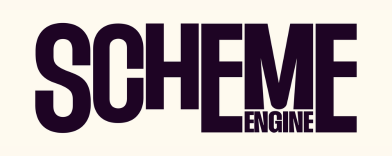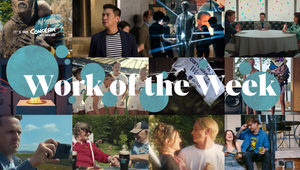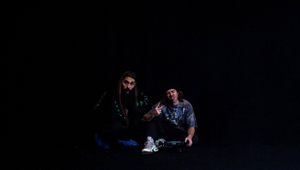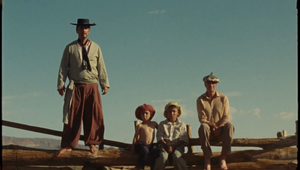
Giordano Maestrelli Shares A Thousand Tiny Memories Behind the Scenes of a Zoetrope Love Story

In ‘All I Need’, a new promo for Maribou State’s latest album ‘Hallucinating Love’, director Giordano Maestrelli crafts a technically daring and emotionally layered meditation on heartbreak and memory. Produced by Stink and rooted in early cinematic language, the film explores the fractured timeline of a relationship through an intricate visual metaphor: a custom-built zoetrope device inspired by Eadweard Muybridge.
Shot first on 16mm and later transformed into over 2,500 individually printed frames, the narrative unfolds across two coexisting dimensions – a looping, contained world where the couple’s past plays out in repetition, and a ghostly present lingering in the background.
With a production that spanned more than 23 hours and required frame-by-frame assembly, ‘All I Need’ stands as both a tribute to handcrafted filmmaking and a poignant exploration of love’s emotional residue. Giordano shares the obsessive planning, emotional undertow, and analogue ingenuity behind one of the year’s most technically impressive music promos.
LBB> What were the initial production challenges in translating the idea into a feasible shoot plan?
Giordano> The entire production was divided into two stages: the first was the live-action portion, where we shot the intro scene and all the elements that would later appear inside the zoetrope. Then, after a week, we moved on to the actual zoetrope part.
For the live-action portion, we spent two days in a house, shooting the story of a couple chronologically, as they fell in love and, later, fell apart. We timed everything precisely, shooting and editing as we went, watching the story come to life.
Once we wrapped this first stage, we prepped all the footage to be printed and re-photographed inside the zoetrope. It was an intense process of grading and understanding how those pixels would behave once transferred onto real paper. We also began sorting out the shooting schedule for the zoetrope stage.
The biggest challenge was that certain moments in the story needed the background to have a specific light condition. For example, when the couple first starts to drift apart, I wanted the background to turn dark, as if night were falling. Because we’d start photographing the zoetrope frame by frame in the morning, we had to calculate exactly how many images we needed to shoot to reach that scene once it was already nighttime.
I think we had something like 26 seconds per photograph to stay on schedule, so it became a bit of a chase to match the footage inside the zoetrope with the background’s changing light conditions.

LBB> Can you walk us through the process of building the custom zoetrope device? How long did it take, who was involved, and what materials or technologies were used?
Giordano> I’ll try not to nerd out too much here! We started by studying how Muybridge’s original zoetrope worked, and it’s actually quite simple - it’s just a series of images arranged sequentially. But we weren’t recreating it, we were reinterpreting it… From the very early stages of the project, I had envisioned this as an experiment with time: to build a machine that questioned our perception of memory and create an abstract journey back to the past and forward to the future, happening at the same time.
I really wanted a shot where we had the zoetrope strip in the foreground, showing one story at its own rhythm, while the background told a second tale, paced on its own flow, kind of like a timelapse. So building the zoetrope wasn’t just about materials and dimensions. It was also about figuring out the ideal lens and depth of field to tell these two parallel narratives.
My long-time friend and collaborator, Martino Piccinini, was essential during this part. After many discussions, we decided on a 3-meter diameter for the machine. It had to fit inside a regular living room, so it couldn’t be gigantic. With that diameter, and given that each print was around 22cm long, we ended up with 18 images inside the device. The camera sat at the centre, panning on its own axis, image after image. One full camera rotation gave us roughly one and a half seconds of footage. After some 3D pre-visualisation, we realised the background would move way too fast for the flow of the music. Our first idea was to make the zoetrope bigger to fit more images, but that wasn’t possible because the space wouldn’t allow it. The solution was to create a system where the top part of the machine, which held the pictures, rotated freely. After each click, we’d compensate for the picture’s position, giving us control over the timing of the background movement.
The whole structure was built from steel and firmly anchored on location. Seeing this machine evolve from an idea to a sketch, then from a sketch to a device, and finally into a film was amazing. None of it would’ve been possible without Martino’s obsession and his eye for detail.
LBB> How did the team handle printing and managing over 2,500 individual film frames? Were there specific technical or archival precautions?
Giordano> This was quite a challenge that began even before printing, because we weren't colouring a final digital frame, we were colouring a picture that would then be re-photographed. So we had to figure out the best way to grade the footage, as we couldn’t aim for a final look right away.
Erick Moraes, our amazing colourist, worked closely with Daniel from Farbewerk Fine Art Print. After testing several prints, Erick developed a workflow to predict how contrast and shadows would translate onto paper, allowing us to digitally preview how the printed images would look. After more than eighteen hours of printing and nearly twenty kilos of photos, we were ready to reassemble everything inside the zoetrope.
Each picture was carefully numbered and bundled by scene, and our shooting schedule followed the tags printed on each image (you can see the hidden numbering on the white strip at the bottom).
At first, we were super careful, wearing white gloves to handle the prints. But after picture number one hundred -- we were grabbing them with greasy fingers and throwing them on the ground afterwards. That’s the beauty of it.
LBB> How was the shoot?
Giordano> Shooting for over 23 hours sounds insanely hard. It was a mix of regret and joy, to be honest. I won’t lie, it was a massive undertaking and, at times, really boring. We were literally doing the same thing over and over again. But after a few hours, I took a break, unloaded all the photos onto my computer, and played the sequence for the first time. We were all in awe. It was beautiful to see what, for so long, had only existed as a concept. I realised we were experiencing the chance to take full control of the craft. To physically touch every single frame. In an era where filmmaking often feels distant, cold, and impersonal, it was a relief to return to the roots of moving images.
LBB> Were there any unexpected technical failures or learnings during the stop motion reassembly inside the zoetrope?
Giordano> A lot, actually. If you look closely, you’ll notice frames where someone is passing in the background or a hand bleeds into frame. I decided to keep those. They make the whole thing feel more tangible, more human, not just a VFX trick. We were handling thousands of printed images, so at some point, it was only natural to lose a bit of control here and there. There’s one moment, around 2’12”, where you catch a quick flash of the dinner scene a few seconds before it’s supposed to happen. That was a shooting miscalculation, but in the end, it matched the music flawlessly, so I kept it.
LBB> How did production design, cinematography, and motion mechanics teams collaborate to ensure visual cohesion between the “ghostly” background and the looping zoetrope sequence?
Giordano> Our biggest concern was not overwhelming the viewer. The technique alone was already visually stimulating, so I tried to counter that by telling a simple story in simple terms. Since the background would be this flashy, strobe-like presence, we decided to make the foreground story smooth and linear. The sequence shot was key to achieving that - it created a flow that was magnetic and easy to follow, the perfect counterweight to the background. We also balanced tones and colours so that the foreground had warm, cosy vibes, while the background stayed neutral and almost aseptic.
LBB> Given the analogue-meets-digital nature of this production, how did you balance handcrafted artistry with modern post-production?
Giordano> It was all about understanding how our analogue and mechanical decisions would behave once loaded into a digital timeline. Colours, contrast, and tonality were big concerns, but the zoetrope itself remained a tricky question for a while. Whether it would work, or be big enough? Would the images read well? In the end, it took way more testing and planning than I’m used to, but that’s what made this process so unique and memorable.

LBB> Were there moments on set where the emotional weight of the story unexpectedly intersected with the technical process?
Giordano> I can’t recall one specific moment, but the whole process was very immersive. It was beautiful to manipulate each frame individually. To see the story I first wrote in words, then captured at 24 frames per second, now presented at a slower, more deliberate pace. At the end, when the house was full of scattered images, I took a walk and collected some of the most memorable frames. It felt very poetic, almost like collecting memories.
LBB> What sets this project apart from other music videos you’ve produced, both in ambition and execution?
Giordano> It was by far my most technically challenging piece. Everything about it felt different, from the process to the final result. I was constantly pushing myself to think in new ways. To approach each scene and shoot from angles I normally wouldn’t. I think that translates into something fresh, playful and something that feels, looks, and manifests itself in a truly unique way.















